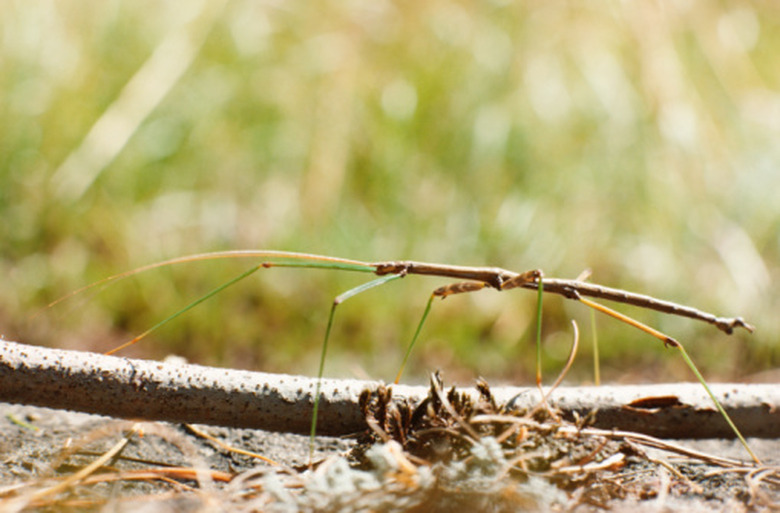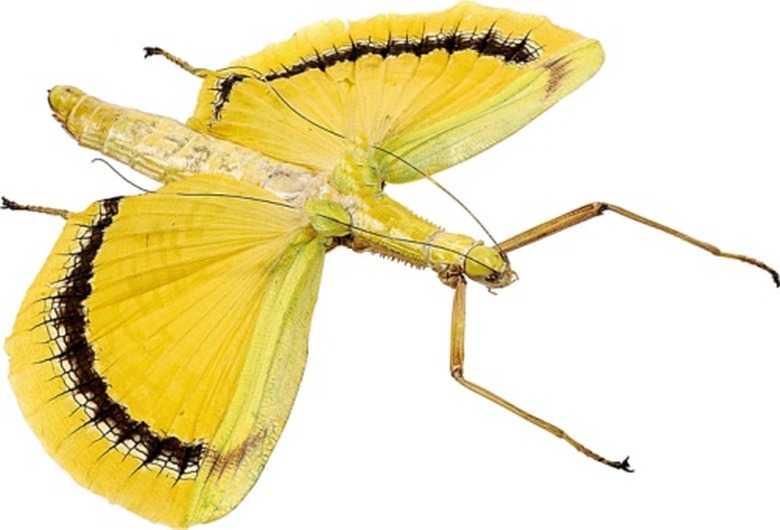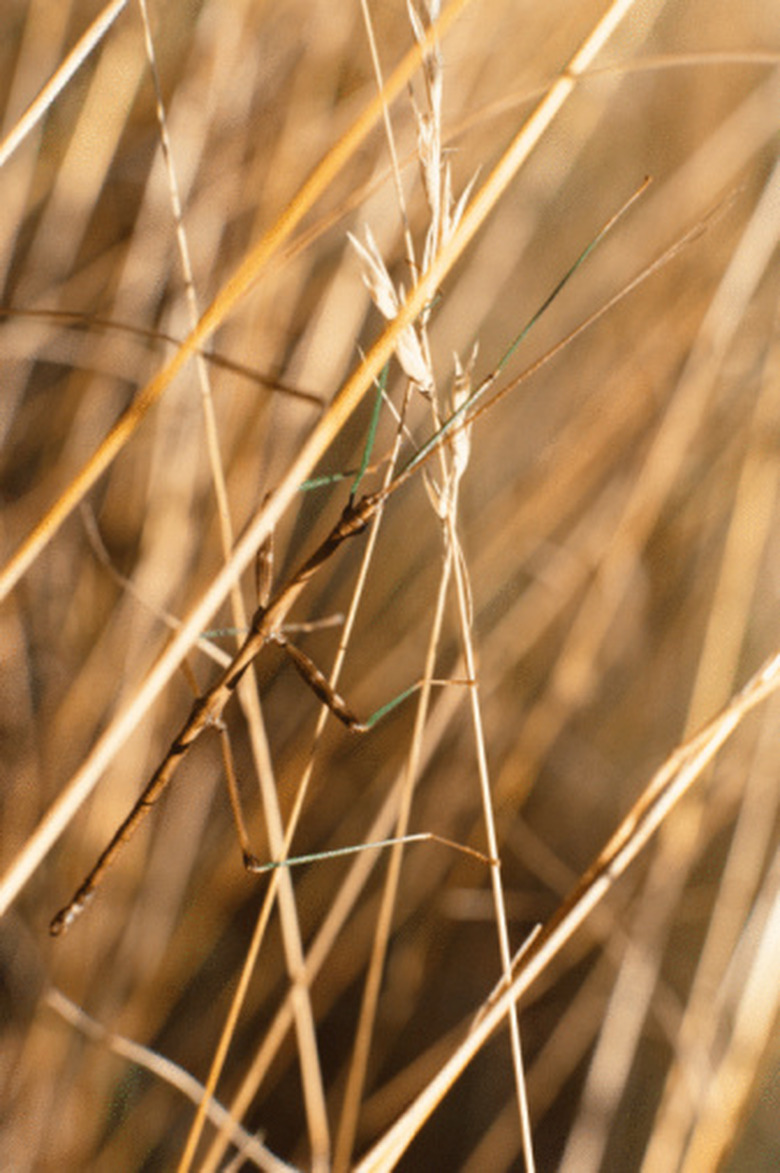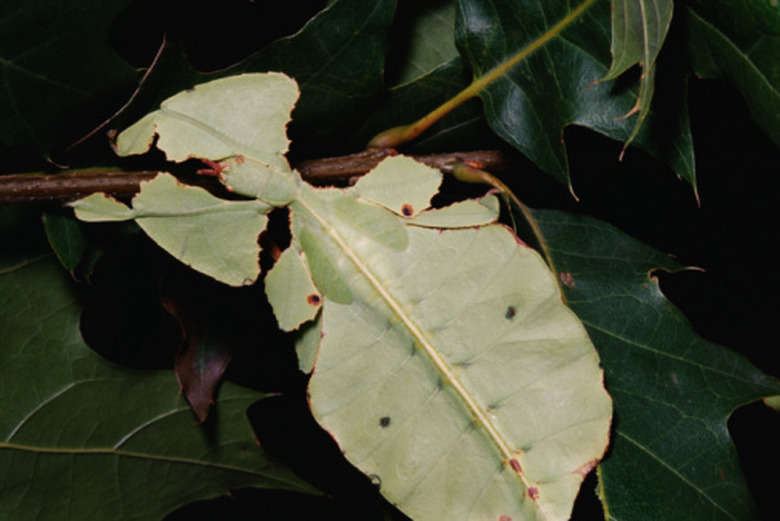What Predators Eat The Walking Stick Insect?
True wallflowers, stick insects fade into the background and hope that no one, especially predators, notices their presence. Commonly known in some areas as walking sticks, these insects are mostly nocturnal, and come out at night to feed. They usually spend their days motionless under leaves and plants, hiding in plain sight. Walking sticks have, however, evolved a number of methods of deterring predators in the event they are spotted.
Stick Insects
Stick Insects
There are about 3,000 species in the Phasmida order, the order that the stick insects belong to. The name Phasmida is derived from a Greek word that appropriately means "apparition." Walking sticks, or stick insects, range in size from very small – 1/2-inch long — to enormous, with one species reaching a length of 13 inches. Though some species live in temperate areas, stick insects are found mostly in the tropics and subtropics. The average lifespan of the stick insect in the wild, where it feeds mostly on plants, is about three years.
Predators
Predators
As an insect the walking stick is pretty low on the food chain, so its predators are numerous. Birds swoop down to attempt a nibble, and on the ground rodents, reptiles, spiders and even other insects consider walking sticks a meal. Walking sticks have gained a reputation as survivalists, though, because of their various ways of avoiding being consumed.
Camouflage
Camouflage
It is possible to look directly at a walking stick and not see it unless it moves. Many stick insect species are expert at camouflage. Some have evolved to resemble leaves or butterflies and, of course, sticks. A few species also change color to blend in with their surroundings, or to mimic a different, unpalatable insect. The legs and body segments of stick insects frequently duplicate or resemble their host plant's look, distance between leaves or even nodes on branches. Some will even quiver right along with the plant if a bird alights on the branches, so that it does not reveal itself by staying still.
Defenses
Defenses
When camouflage fails and the stick insect is spotted anyway, it still has a few more tricks to try. Some will, if pecked at by a predator, immediately fall to the ground and remain motionless — just another falling leaf or branch. Others will make their bodies as rigid as the sticks they resemble, hopefully discouraging anything that thinks they are edible. Should the predator attempt to munch on the stick insect anyway, more defensive measures are put into play. Some species leak blood from their leg joints; others vomit up an noxious liquid in hopes that the prey will taste that first and give up. If the insect is gobbled up anyway, the foul taste may, however, discourage the predator from eating the next one it finds.
Cite This Article
MLA
Kelley, Nanette. "What Predators Eat The Walking Stick Insect?" sciencing.com, https://www.sciencing.com/predators-eat-walking-stick-insect-8443538/. 22 November 2019.
APA
Kelley, Nanette. (2019, November 22). What Predators Eat The Walking Stick Insect?. sciencing.com. Retrieved from https://www.sciencing.com/predators-eat-walking-stick-insect-8443538/
Chicago
Kelley, Nanette. What Predators Eat The Walking Stick Insect? last modified March 24, 2022. https://www.sciencing.com/predators-eat-walking-stick-insect-8443538/



